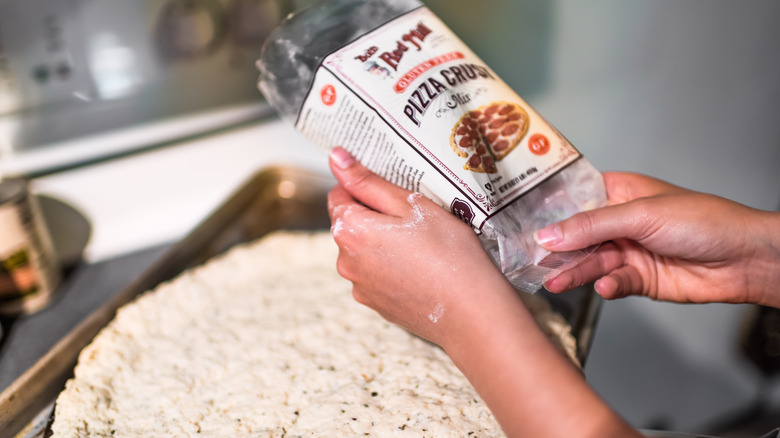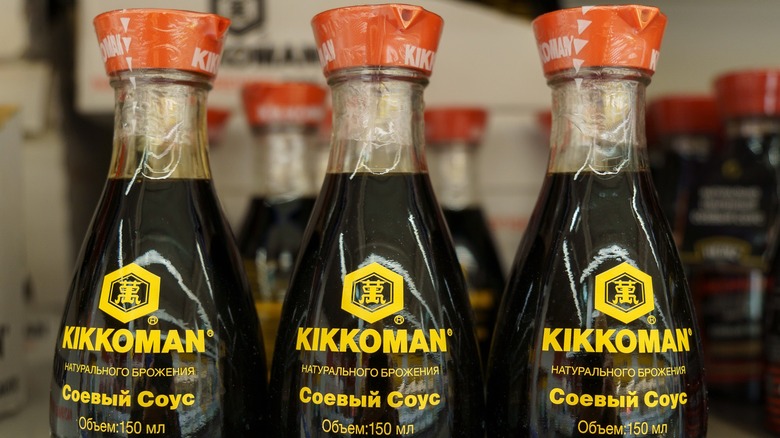The Real Reason Brands Put Recipes On The Back Of Products
Holidays and get-togethers often center around food, and few things make a host feel prouder than presenting diners with a secret family recipe passed down through the generations. It may come as a shock to discover that Grandma's famous casserole may not have been created in her well-worn kitchen but likely came from the label on the back of a can of condensed soup. Your auntie's beloved chocolate chip cookie recipe? Made by a stranger in a Nestle test kitchen. Brands have been providing recipes to sell their products for decades, but The Takeout notes that it might not be about a company's profits.
While many cooks have put their spin on classic box recipes like Rice Krispies treats, the original versions of many American favorites were created by behind-the-scenes culinarians working for big brands. Dorcas Reilly won't be at your family's Thanksgiving table, but the famous green bean casserole she made for Campbell's Soup will likely be.
You might loosen your grip on the family recipe book when you discover that test kitchens have been creating iconic back-label recipes since "convenience foods" began gaining popularity in the '40s. Convenience being key in the new wave of ready-made meals prompted companies like Campbell's, Betty Crocker, and General Mills to employ cooks who could create easy recipes using their foods that would ensure repeat customers. It was a genius marketing scheme that worked, but many test kitchen cooks say they didn't create the recipes for fame and fortune.
Back label recipes aren't all about the bottom line
Companies have been putting recipes created in test kitchens on the back of their food labels for years, and Taste connects this highly effective marketing move with creating iconic food innovations in America. While marketing and profits are the main motivators behind back-label recipes, a surprising byproduct has been the culinary culture created by back-label recipes.
When Chef Helen Roberts created Kikkoman's back-label turkey brine recipe, she called for the whole bottle because that would move the most product and create major sales for the soy sauce producer. Big-brand food producers invest heavily in cultivating recipes that become synonymous with the product, creating a customer base that won't stray from the original source. While the inspiration for recipes on brand labels is based on making money off return shoppers, the companies also benefit from the more wholesome image of the recipes that test kitchen cooks create.
Recipes printed on food labels and boxes are responsible for bringing food trends, viral dishes, and comforting family traditions to the dining room table. Many recipe creators enjoy anticipating consumers' food needs and interests along with making mealtime a little easier. Creating legendary dishes is priceless for food brands and serves as the cherry on top of your favorite sundae recipe.

